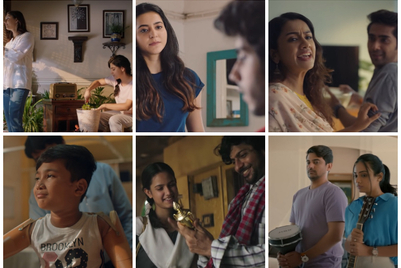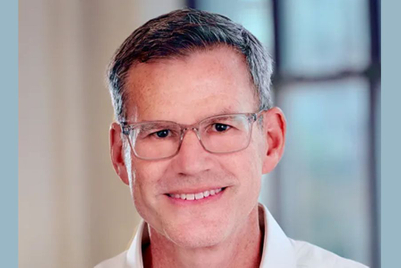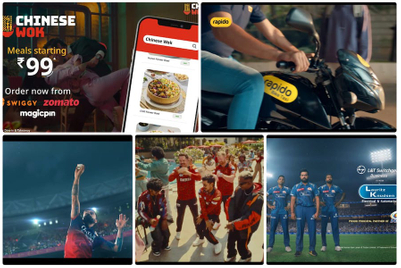Over the last couple of years (and longer), we have seen major protests against holding companies within the advertising industry.
Last week, anti-fossil fuel industry group Clean Creatives released its 2023 F-List, which highlights 500 contracts with fossil fuel companies across 294 advertising and PR agencies between 2022 and 2023.
Given the noise around this, we caught up with Amit Gheji, head - marketing, Gulf Oil Lubricants, to learn what companies in this space can do to get rid of this perception. We also spoke to him to learn more about the brand's marketing plans in India, associations with the likes of MS Dhoni, Hardik Pandya and Smriti Mandhana, and more...
Edited excerpts:
In the seven years you've been with the company how has it and the industry evolved?
The industry has gone through a bit of change, the biggest came as a result of the pandemic. There has been a lot of change in consumer preferences that have come post the pandemic. The other issue that the industry faced was the increase in prices of raw materials.
Coincidently, these two issues coincided. During and after the Covid pandemic, discretionary spending has gone down because of the impact on people’s jobs and so on, and at the same time our products have become more expensive.
Urban and rural areas also behaved differently during the pandemic. We first saw urban areas face the impact of the lockdown and the resultant economic slowdown. At that time, the rural supported us, fortunately.
What has helped Gulf Oil is that we are a balanced and diverse company, unlike some of our competitors that rely on certain pillars. Our strength is that we are moderately strong in each of the segments we operate in. So if one suffers, the other pitches in.
During the first lockdown when urban was in a complete lockdown, rural wasn’t affected and we grew our agriculture business. That helped us stay afloat.
Post that, wave two onwards, rural saw a bit of subdued demand, but urban picked up. It has helped that Gulf Oil is a very balanced company across segments.
You mentioned that you’re moderately sized in all the categories that you operate in. Would you be leaders in any category?
We are stronger in the commercial vehicle oil category. Our association with Ashok Leyland is an old one so that helped us in the commercial vehicle category which was our first building block. Then, we got strong within the bike segment.
We are also looking to grow dramatically in the passenger cars and agriculture categories.
To achieve that growth, we have seen associations with MS Dhoni, Hardik Pandya and an IPL team in India and also global tie-ups. What do you look at while partnering with an ambassador?
We look for common values and that’s important. The performance of the brand ambassador or the partnering team is one thing, and that’s a given, but what is as important, if not more, are the shared values.
We didn’t sign MS Dhoni, just because he was the best cricketer and captain then. We got him on board because he was also an avid biker. He owns more than 80 bikes and is a complete believer in DIY. He opens up his bikes for his maintenance. That’s a very strong connect for our segment of bikers and they look up to him outside of the cricket field. So when Dhoni says he buys a particular brand of engine oil, which is good for a bike, it becomes more believable for the viewers.
Hardik Pandya is doing well on the cricket field too. He’s an all-rounder and there are some natural fits among products. Initially, when we signed him, he used to come to the batting crease and start accelerating immediately. We had one of our brand promises – Insta Start, and that fit in nicely with his batting and cricketing skills. Now, he’s a very well-established all-rounder and we have taken him on board for Formula SUV, which is a SUV engine oil which performs well on all terrains.
Smriti (Mandhana) is a recent addition to our brand ambassador list. We are cognisant of the growing female audience among our customer segments. Gone are the days when men were the sole decision-makers for engine oil lubricants. It was important to have a female brand ambassador as well and so we partnered with her.
Regarding the appointment of Mandhana, are we seeing more women actually making decisions about engine oils?
33% of all two-wheelers sold today are scooters. There’s a popular notion that all scooters are only used by women and that’s not true. Most women ride scooters, but not all scooters are only rode by women. We estimate that 10-15% of the two-wheelers are rode daily by women. So it’s still a smaller segment, but it’s a growing one.
Women are also participating in bike and endurance racing. We recently hosted a monsoon bike rally and there was a team of women who made it among the top five.
We’re seeing this in the four-wheeler category too, with more women making purchases and driving cars.
Considering you have an association with three cricketers and an IPL team, with the festive season and the Cricket World Cup right around the corner, what are Gulf Oil’s plans for the same?
As of now, we don’t have a World Cup-centric communication planned. We may be on air during the tournament, but there’s no new piece of communication. We are considering digital to put our message out during the tournament.
Outside of the World Cup, it’s a dream to get Dhoni, Mandhana and Pandya together in one piece of communication. But those three being those three, it’s a challenge to get their dates to shoot together. But it’s there in the pipeline and we are working on something and hoping to crack it soon.
When it comes to your marketing spends, could you share the split by media?
We can’t disclose spends by media, but we are seeing more and more of our outlay on digital. Three or four years ago, more of it was on TV and less on digital. Now, the majority of our spends is on digital and less on TV.
Digital’s sharp targeting and retargeting through first-party data from activations on-ground and the fact that you can advertise on third-party websites makes it important for us.
There was a time when digital was considered to be cheaper and so it was preferred. Now, it’s no longer cheaper but offers better sharp targeting.
You entered the EV mobility space with Tirex after Indra Chargers for charging infrastructure. How are you looking to build noise around this?
That will have to be more around corporate communications and PR than consumer mass communication per se. All said and done, while there’s a lot of hype around EVs, the actual penetration of them is still low, even though it’s growing. At this nascent stage, it doesn’t make sense to go mass media around. We will be showcasing our capability and strength on relevant forums.
We have also acquired a SaAS company which is related to charging. We are completing our portfolio in terms of EV charging infrastructure and this is a good platform for us to grow.
Globally, we see Gulf Oil also has fuel stations while India doesn’t have that. Could you share the differences between how Gulf Oil operates globally and India?
The brand positioning is the same and we try to recreate that in India as well. India is a significant contributor to the global business. So a lot of the best practices across marketing are taken from India too. It’s a collaboration between the global and Indian marketing teams.
Other than the operation of fuel stations, we are not very different. The core business and focus would be lubricants globally.
We are happy that other markets have now started doing well for us. We are developing a good amount of business in Latin America, and the Middle East. Our marine business is doing very well too.
At a time when there are protests around fuel companies and their advertising agencies, what is Gulf Oil doing globally to battle this?
There is a segment of people who believe oil is a bad word. We are looking to address these concerns by looking at ESG ourselves. Our steps in the charging infrastructure are a part of it. We are signalling that we are ready for change having known fully well that this is going to take time.
Lubricants and ICE (internal combustion engines) are not going away anytime soon. So the business will continue to be robust but at the same time, we want to be future-ready.
While doing so, we are also taking some steps to reduce plastics. Recently, we launched packaging for a product which has 60% less plastic. We have also taken up lake conservation projects that are ongoing through the Hinduja Group.
Outside of this, we take up CSR work like road safety to ensure we come across as a responsible brand. We don’t want to be seen as villains when it comes to environment-friendly conversations.
We want to be seen as a human brand. That’s what Gulf Oil is. We want to look at the person behind the vehicle rather than just the latter and its maintenance. This generates goodwill for us too. Every year we do something for the trucker’s protection and we have five seasons of this now. We vaccinated them for free when there was a shortfall. Before that, we had our soap rakhis for truckers during the first wave. This year, we have taken up the cause of contaminated water with portable water filters. So this generates goodwill for the brand as well.
We will do something for the bikers also now by getting into the riding culture. That’s an important segment as well. We look at the human behind the wheel.
You touched upon the rising prices and oil being a negative term in environment-friendly conversations. Any other challenges in this space?
Most of these challenges are going to smoothen out. We are seeing discretionary spending increase. For rural growth, we must have a good monsoon, and thankfully it’s been okay so far. That should translate into a pickup in terms of rural demand.
.jpg&h=570&w=855&q=100&v=20250320&c=1)
.jpg&h=570&w=855&q=100&v=20250320&c=1)


.jpg&h=334&w=500&q=100&v=20250320&c=1)

.jpg&h=334&w=500&q=100&v=20250320&c=1)


.jpg&h=334&w=500&q=100&v=20250320&c=1)


.jpg&h=334&w=500&q=100&v=20250320&c=1)



.png&h=268&w=401&q=100&v=20250320&c=1)





